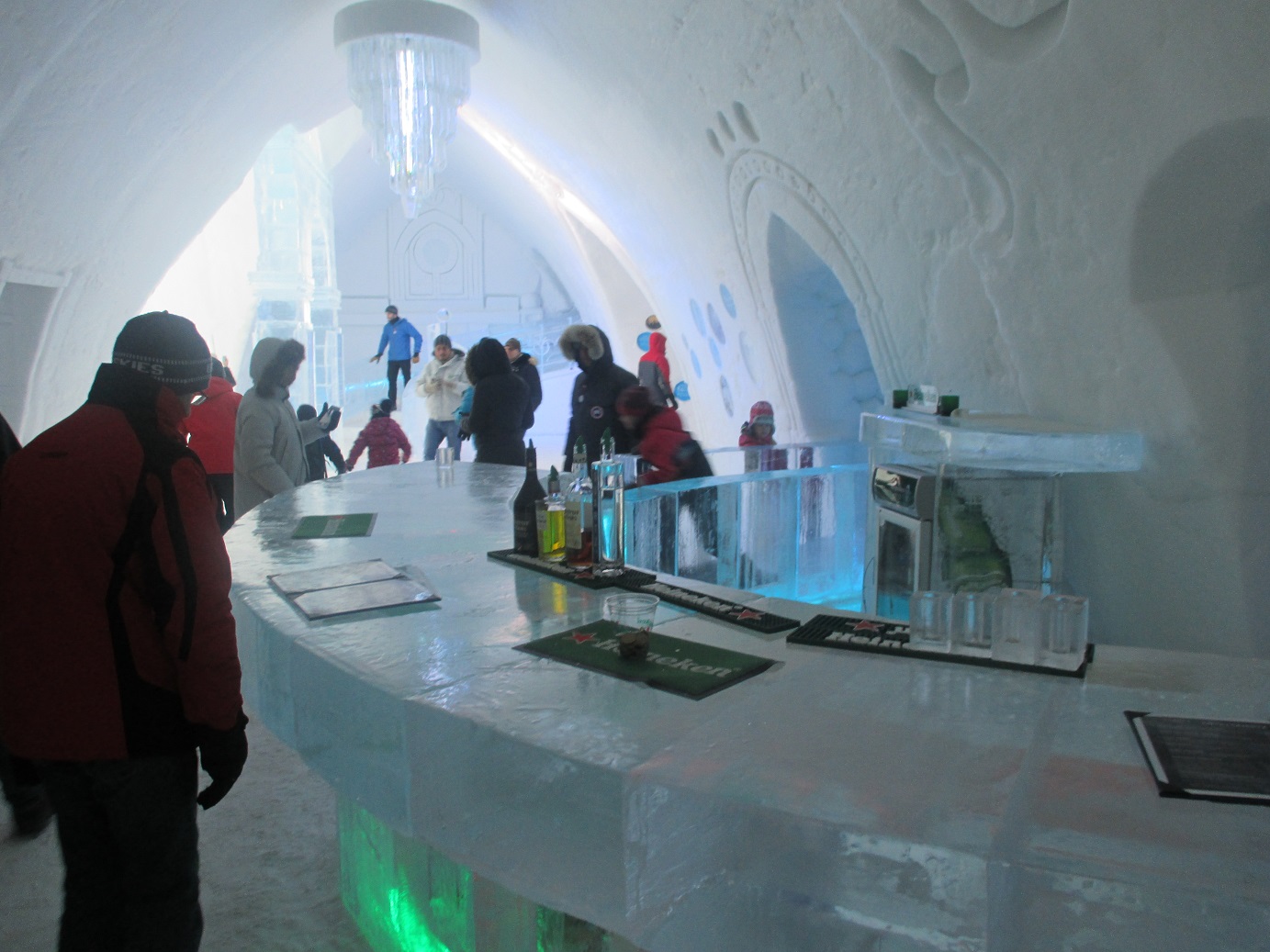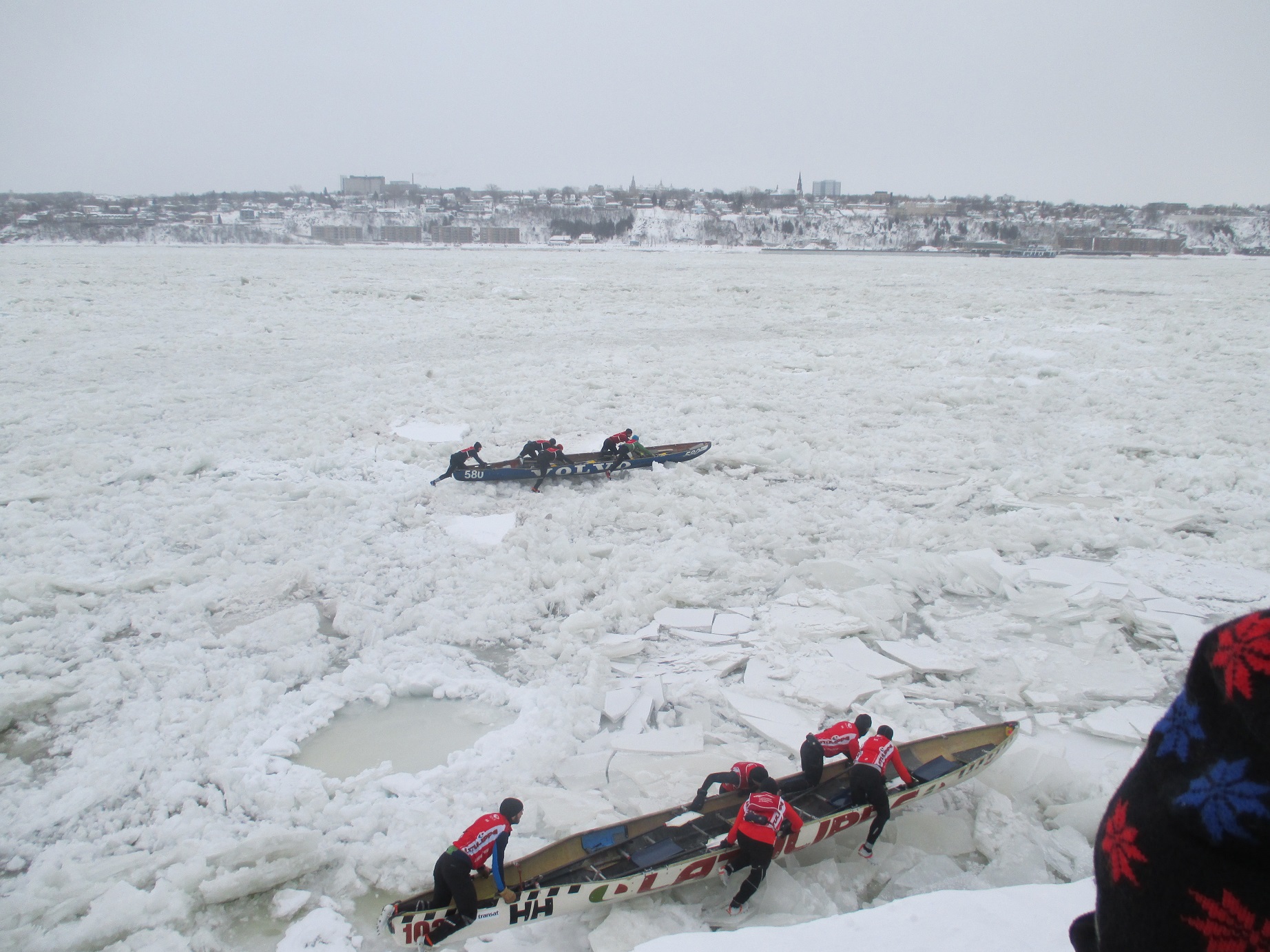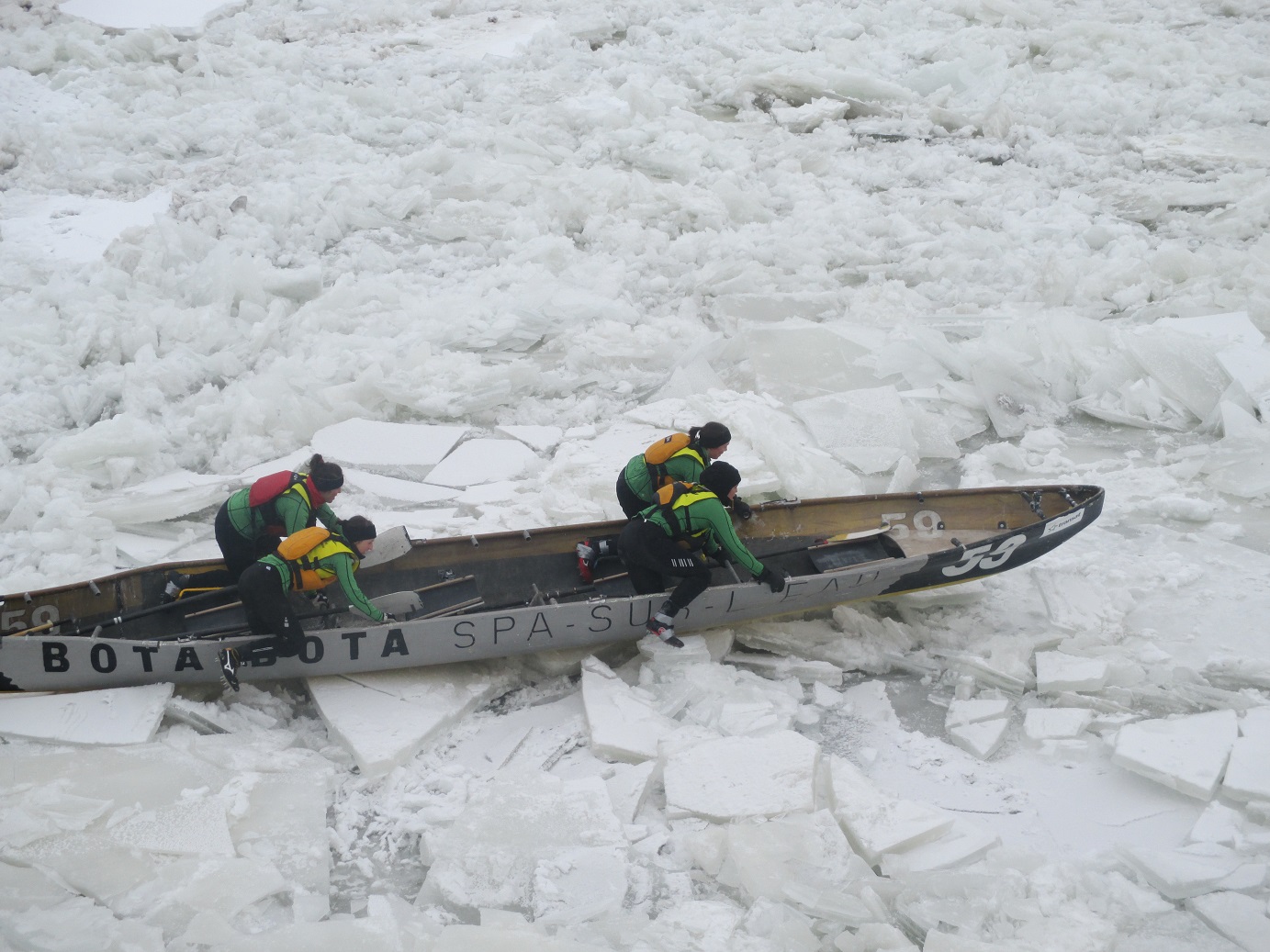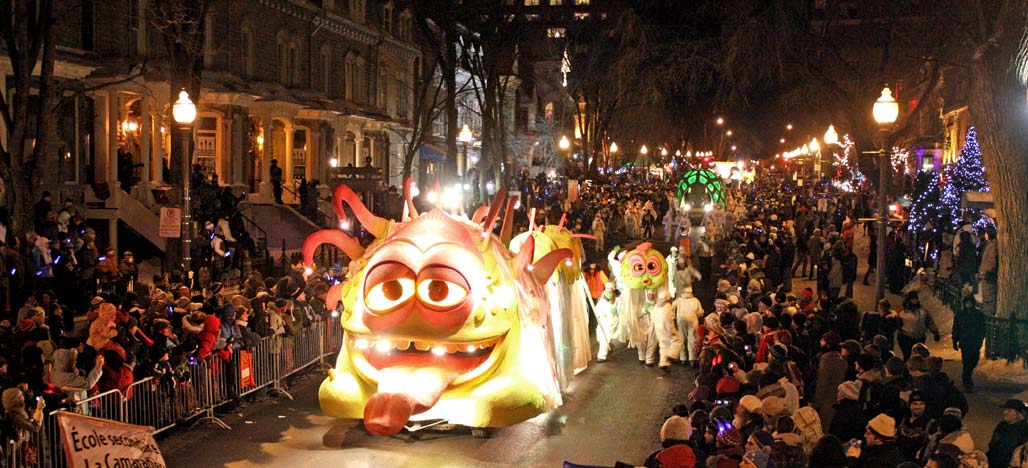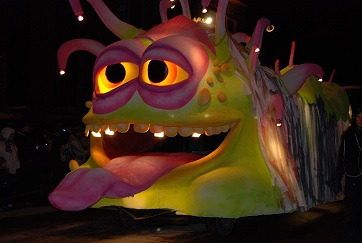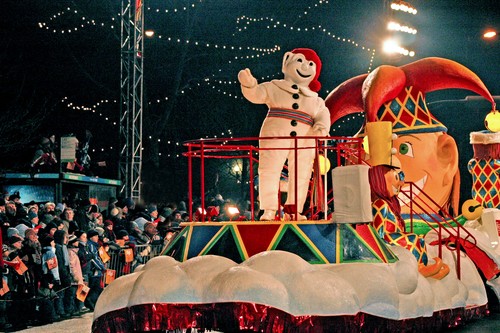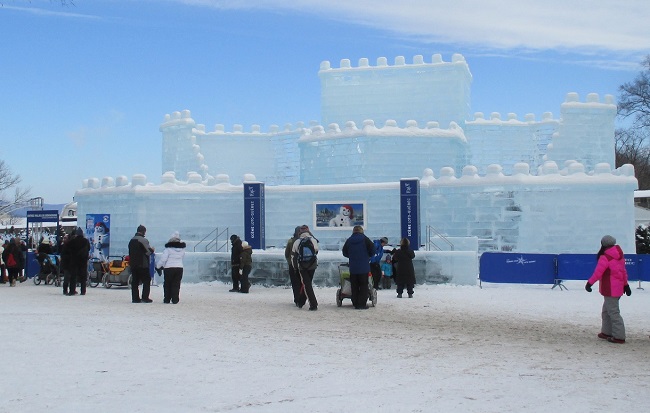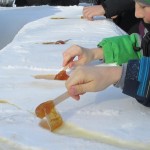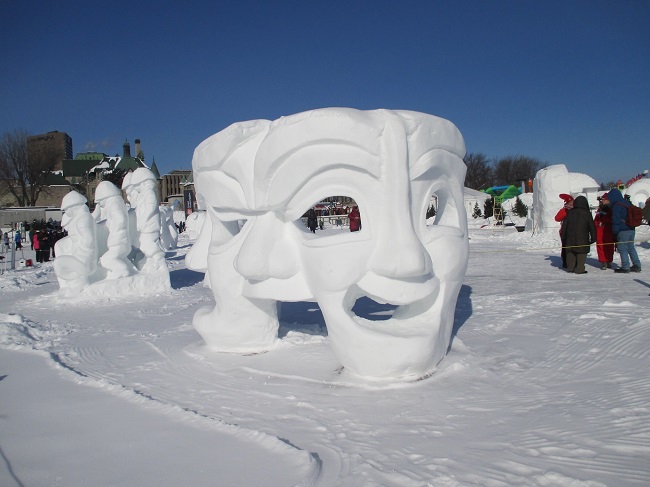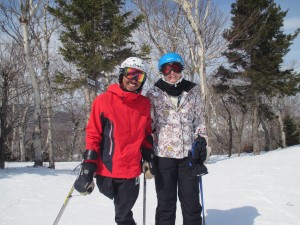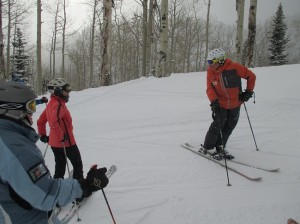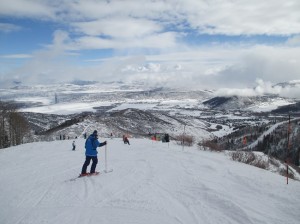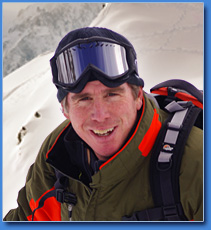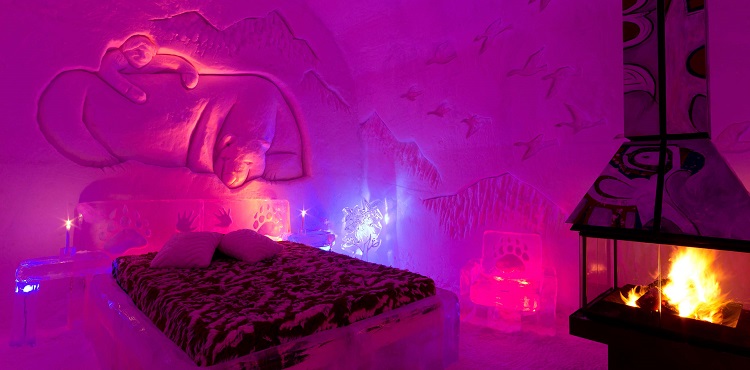
The Hotel de Glace in Quebec features guestrooms with elaborate carved walls and a bed made of ice. Some, like this one, come with a fireplace, though it’s only for looks – no heat enters the room. (Photo courtesy Hotel de Glace)
By Marlene Greer, Correspondent
The bed is made of ice, the walls and floor made of snow, and the ambient temperature is a brisk 24 degrees F. Sound like a place you’d like to spend the night? Surprisingly, many people do.
The Hotel de Glace (Ice Hotel), located a few miles from downtown Quebec, is an imaginative creation of snow and ice, reconstructed every winter in a matter of six or so weeks. From the grand entrance, complete with check-in counter, to the guestrooms, the walls of every room are intricately carved into masterpieces of art, and some of the beds feature massive ice canopies and elaborate headboards.
The hotel is open for overnight stays and to tourists from Jan. 5 to March 22. With 44 rooms, a vaulted hall with an amazing ice chandelier, chapel, bar, disco, and ice slide, there’s a lot to see. Visitors can walk around on their own or sign up for a tour. We opted for the tour, which included a drink at the ice bar.
Like any hotel, the guestrooms range from the small and simple to elaborate suites with fireplaces, which are for ambience only as no heat enters the room. Most rooms come with an ice chair and ice table (can’t imagine spending much time there!) and have one to three beds. But all feature amazing sculpted decor, every one different from the last.
This year’s theme is “Space-Time,” and as visitors wander from room to room, they journey from ancient times into the future. On our tour, we saw one room depicting humankind’s space exploration with a relief of the Space Shuttle and a full-height sculpted astronaut, and another showcasing automobiles, complete with an ice car bed.
Our guide Sara explained that in the evening, the guestroom areas are closed to the public, cleaned and prepared for those staying overnight. A mattress and an isolating bed sheet are placed on the bed to keep the cold from seeping in, and each person is given an arctic sleeping bag. “We advise guests to take a warm shower before bed to increase the body temperature. This will help you stay warm throughout the night,” she said.
After visiting the entrance hall, several rooms, the chapel and disco, the tour ends at the ice bar – a popular stop apparently from the size of the crowd. Sara explained the beer, wine and alcohol are stored in refrigerators not to keep them cold but to keep them from freezing. Everything from the bar counter to the lounge chairs and tables are made of ice. Even the drinks are served in an ice glass, a bulky square block of ice with a hole in the center to hold the liquid.
The first ice hotel went up in 2001, and it’s been a popular winter attraction ever since. With the outside temperature only in the single digits, standing at a table in an ice bar enjoying a vodka and cranberry juice cocktail out of a frozen glass in an ice hotel at 24 degrees feels downright warm.

